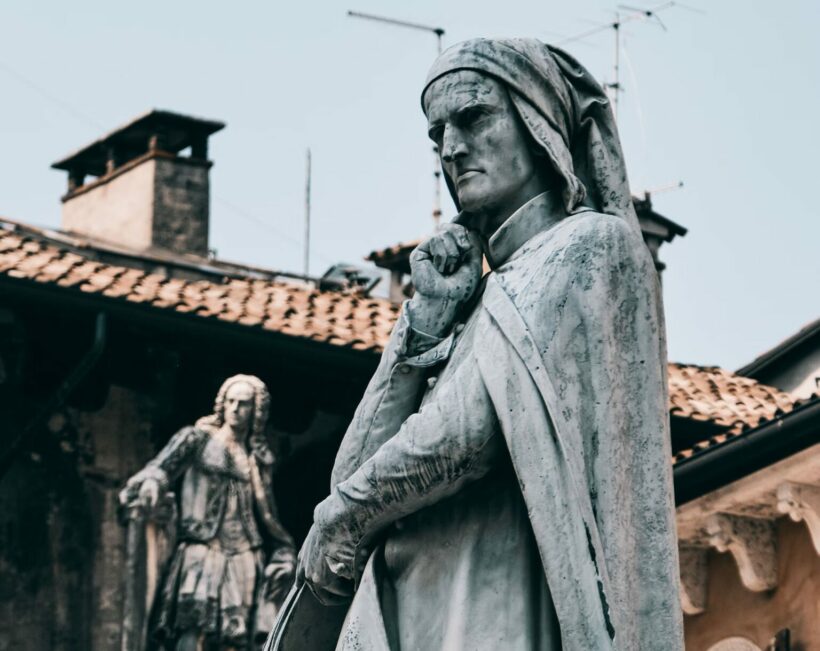In this paper, we will try to show how, in those moments of re-encounter with the spiritual, the intentional and the living, the human consciousness operates in a different way than historically usual.
By David Sámano
I would first like to offer a brief theoretical framework. Allow me to equate the concepts of: noema and noesis, coming from phenomenology, with the concepts of: landscape and look, respectively, elaborated by Mario Rodriguez.
Robberechts, commenting on Husserl, says: “Noesis, or the noetic side of what is lived by consciousness, is the active presence of the subject in the elaboration of a perception and in the constitution of a meaning”.
Mario Rodriguez says something similar when talking about looks: they are “acts of perceiving”, “complex and active acts of organising landscapes”, and not simple passive acts of receiving information.
Roberechts, also commenting on Husserl, says: “The noema or the noematic side of what is lived is the result of the dialogical activity of the noesis: the constituted object or meaning, considered in its essential dependence with respect to the constitutive act” of the noesis.
Mario Rodríguez understands landscape to mean something equivalent: that which results from the “organising activity of the looks”.
Therefore, when in the title of this paper we speak of an internal look, we refer to an act of perceiving and giving meaning to what is lived, oriented by a close connection with the deepest internal registers of each human being and not by external pressures.
From a theoretical point of view, we will then rely on a phenomenological approach to religion, and from the point of view of praxis, on a case of popular religiosity, and on the identitary properties of the group that follows it.
In this advanced and materialistic modernity in which we live, the spiritual unexpectedly resurfaces, after having been “exorcised” from nature, as Sheldrake (1994) would say.
In his beautiful book: “The rebirth of nature. The new image of science and God”, from the field of biology, Rupert Sheldrake finds the analogy to speak to us of the rebirth of the spirit, something urgent in this society on the verge of collapse. And don’t think that we are referring to the spiritual in religious, metaphysical or philosophical terms, but in much more elemental terms, such as those behind the simplest ritual, or in actions, minimally influenced by something more than the immediacy of facts and money.
Sheldrake takes a historical journey, beginning with hunter-gatherer societies, in which nature and its human observer shared the fact of being and feeling alive. This initial image is that of a living, feminine nature, but one that admits natural enclosures populated by other spiritual entities that take root in them. Nomos, fairies, spirits of the waters and of the ancestors swarm everywhere. Even at the end of the Middle Ages, Catholicism tolerated this natural spirituality, giving rise to the first expressions of what would later be called popular Catholicism. In those places where deities were venerated, the stigmatisation of idolatries or heresies fulfilled the double function of placing them in a worldview based on good and evil, and inducing their prohibition.
But this discrimination never exterminated it. Weber claimed that no monotheistic religion had succeeded in “permanently extirpating the world of spirits and demons, but only subordinated them, at least theoretically, to the consciousness of the one God”.
With the advent of Protestantism, this tolerance diminished. The spiritual was confined to the human and nature was stripped of all non-material attributes. No more sacred places, no more sacred animals or plants, and no more sacred objects. Now rationality is the spirit, the expression of the perfection of an omnipresent God.
In the above, we find elements to understand at least one aspect of the genesis of the thinking of the scientific revolution of the 17th century and later of the illustration. The human mind, assuming a single God, had already been trained, from the Middle Ages until the time of the rise of Protestantism, to develop under the surveillance of an external look, a look of someone like God. This look presupposed a general extra-human logic, such as that which was later attributed to the rational systems of science and Cartesian rationalist philosophy, inaugurating a new point of observation external to man. And with this, on the one hand, a new authority, that of the goddess Reason, was placed above the human being; at the same time, nature was placed under our feet, totally reified and ready to be progressively manipulated.
But the treatment of nature as a thing forced a permanent restructuring of rational systems, as we had never done before, no longer just the attempt at the general coherence of a system or worldview, but the impulse to transform them in the face of the new facts that the empirical world presents to human eyes. The view of nature as a thing easily induces one to adapt, discard or exchange any system of thought for another, if this results in greater manipulative control. As everything is susceptible to be used according to human needs and desires, be they the worthiest or the most dehumanised, rational systems themselves became instruments to manipulate things, that is, things too, and were integrated into the world of the market when capital became a means of control and power.

In this empire of things, which is none other than that of the external look, we find popular religiosity, which, in spite of everything, brings the spirit back to life in an unexpected way. Among other things, because it does not recognise commitments to any theological rationality and instead facilitates a return to the original mystical experience, which only takes shape when an inner look is adopted, even if only for a few moments.
Many have emphasised the connection with the divine, without cumbersome intermediaries, that popular religiosity achieves. It entails an act of free consciousness, in which the interference of the religious hierarchy, in contrast to that which takes place in an official framework, can remain in parenthesis.
Nor does it require the mediation of an interpreter; it is an act of consciousness, without the imposition of an object that can be manipulated by a will external to the very subject of popular religiosity.
That moment, in which consciousness relates to the sacred, without intermediaries, flashes briefly, because just as one of those sub-atomic particles is very short-lived, it can easily be diluted in the force field of some force. However, in the case of popular religiosity, in contrast to official religiosity, the chances of it being prolonged are greater, given the characteristics of the spaces and power relations in which it unfolds.
Mario Rodríguez, the author from whom we have also drawn this model of: act – object, pointed out, based on this scheme, the danger of manipulation that is revealed when it is applied to the religious context. For this reason, he emphasised and advocated a reconversion of all religious practices towards an internal religiosity. The basis of this lies in the resurgence of the intention behind the mere religious act, which seeks its object like any act of consciousness, but without pretending to calm this search by imposing any “sacred” object from outside. In a lecture entitled: Religiosity in today’s world, in 1986, he outlined a scenario in which popular religiosity has a place, he sketched it on that occasion with the following words:
“It could happen that a diffuse religiosity was growing in small and chaotic groupings without building a formal church, so that it would not be easy to understand the phenomenon in its great magnitude”.

I think we can see something of this free way of conceiving the religious life of humanity today. To illustrate this, and as a very brief tribute – Rodriguez passed away a few days ago – I would like to present some photographs of certain ambits that have been built, inspired by his ideas. They are empty spherical rooms, without any objects, except for very elementary things such as seats. Those who have built these enclosures say -interpreting Rodriguez and in analogy with pneumatic phenomena-, that their function is to make a void, for it to suck, from the interiority of the one who seeks the sacred, regardless of the belief or religion to which he adheres, and without suggesting external objects to satisfy such a search.
These forms of religiosity can also be seen in many of the spaces defined by popular religiosity. Let us look at the case of the Tree Cross. This tree, which grew in the shape of a cross, gave rise to a community of followers who, every May 3rd, congregate around it to celebrate a mass and share a breakfast of atole and tamales offered by the native families of the town of Santa Cruz Atoyac, the urban locality in which this sacred site is located. For further reference, the Cross is located on the corner of a rectangle, within the green area of the basketball courts, in the Benito Juárez delegation, at the intersection of Zapata and Cuauhtémoc Avenue, in Mexico City.
Before the Benito Juárez delegation was built, there was a “lost city”. It gives the impression that the origin of the cult comes, not from a village context, but from an urban environment, preoccupied with having a symbolic resource to prevent and cushion violence. Several people have told us that the place where the Cross can be seen today was the entrance to the lost city and a passageway full of delinquents and thugs.
Even in the eighties, the tree that gave rise to this faith was still growing when no one expected it to. Something similar inspired Sheldrake, returning to our early biologist, to speak of the rebirth of nature. Observing a row of wickerwork, from which rusty wires were hanging on a family farm, it was explained to him: “that there had once been a wire fence on wickerwork stakes, but the stakes had come back to life as these plants”.
Sheldrake was filled with such a reverence that it led him to sketch a path to explore a new image of science and God.
But back to the tree.
In the trunk, we can distinguish three levels, which inspire the title of this paper: at the base is the natural world, allegorised by the flowers; in the middle part, we find the human world, a place reserved primarily to manifest the requests and miracles received; finally, at the top, the divine, symbolised by the face of Christ. Resorting to José Caballero’s methodological strategy, set out in his book Symbols, signs and allegories, we can consider, in a general way, that the cross of the Tree is a symbol that generates a vertical tension, in which three types of allegories have been placed.

On the third of May, devotees from neighbourhoods not so close, such as Portales, and even further away, such as Héroes de Padierna, arrive at the Tree Cross. Among them are the main organisers of the celebration of the day of the Holy Cross, there, at the foot of the tree. Thanks to them, the cult has been maintained and has achieved relative autonomy from local authorities, both traditional and ecclesiastical. This is more a popular religiosity of urban origin than a folk one. On that day, an atmosphere is created that is conducive to both private worship, which can be observed throughout the year, and collective worship, both of which coexist harmoniously.
The material care of the Cross, which generally intensifies on the eve of the third of May, is a good example of how within chaos there is always order. Without any plan and anonymously, people contribute what they think may be necessary for the maintenance of the cross. In 2006, for example, someone built a fence around it, and no one can say exactly who it was.
The same is true of the cement frame at its base, which is much older. But all versions are accepted. By way of conclusion,
I will say that…
This self-organisation that we observe, the non-dependence of powers and freedom, without intermediaries, to connect with the divine, make us think that it is very probable that popular religiosity has properties that give it a greater capacity to adapt to the present and future world than the official religion. Especially because of the ease with which its devotees can adopt an internal look at their practices.
Mario Rodríguez emphasised the need to reconsider all forms of thought, not only religious ones, from an internal look; that is, from the connection with the profound registers of life, which are none other than those of moving away from pain and towards pleasure. Thus, any worldview, any scientific theory, doctrine, philosophy or myth, before claiming to be the expression of a general coherence, of how and why things happen, will humbly and essentially recognise itself as a response of life in its attempts to continue being life. Thank you.
Paper presented at the ENAH Formative Research Project, Pueblos entorno urbano, 2010.
David Sámano is a full-time research professor at the Universidad Autónoma de la Ciudad de México (UACM) and researches topics related to epistemology, philosophy of science and anthropology of science.
Article from the book Interpretando al Nuevo Humanismo. Ethnology, Epistemology and Spirituality. https://edicionesleonalado.net/es/producto/interpretando-al-nuevo-humanismo/
STUDY GROUPS AT THE IHPS / APPLICATION FORM
TELEGRAM:










